Are you wondering what is considered a long-distance relationship and if you might be in one? It’s a common question, especially since updated 2024 statistics show that around 14 million couples in the U.S. are currently navigating love from afar.
You’re in the right place for clarity. This guide defines these relationships, shares current facts, and offers simple, actionable tips to help you feel closer despite the physical distance.
Keep reading to see how your connection can grow stronger, even when you’re miles apart.
Key Takeaways
A long-distance relationship (LDR) is generally defined as partners living at least 100 miles apart. This situation affects roughly 3.75 million married couples in the U.S. alone.
LDRs depend heavily on technology to bridge the physical gap. Apps like Paired for daily questions and Rave for watching movies together help couples maintain intimacy and overcome emotional distance.
Common challenges include miscommunication from a lack of non-verbal cues, scheduling conflicts across time zones, and travel costs. These factors can increase feelings of loneliness or jealousy.
On average, LDR couples visit each other 1.5 times a month and typically plan to close the distance after about 14 months. Over 60% of long-distance relationships are ultimately successful.
By 2025, technologies like virtual reality (VR) and smart gadgets like Bond Touch bracelets, which send touch vibrations, are expected to make it easier for partners to feel connected and reduce loneliness.
Table of Contents
Defining a Long-Distance Relationship

A long-distance relationship involves a physical separation that makes daily, in-person contact difficult. This distance requires extra effort, clear communication, and the smart use of technology to maintain a strong emotional connection.
Physical distance

Physical distance is the most obvious marker of a long-distance relationship (LDR), generally starting at 100 miles apart. The average distance for these couples is around 125 miles. Many find themselves separated by work, school, or even international borders, which is common for those using sites like those featuring Ukraine brides to find a partner. In my own life, that’s how I met my wife on LadaDate.
This separation reshapes how partners maintain their emotional connection, demanding more intentional communication. A 2020 study showed that about 34% of romantically involved college students are in LDRs, highlighting how common this is, especially for younger people.
Being physically apart creates unique stressors, as the lack of daily face-to-face interaction can lead to loneliness and anxiety. It tests trust and commitment, forcing couples to actively work on maintaining intimacy from afar.
Emotional distance
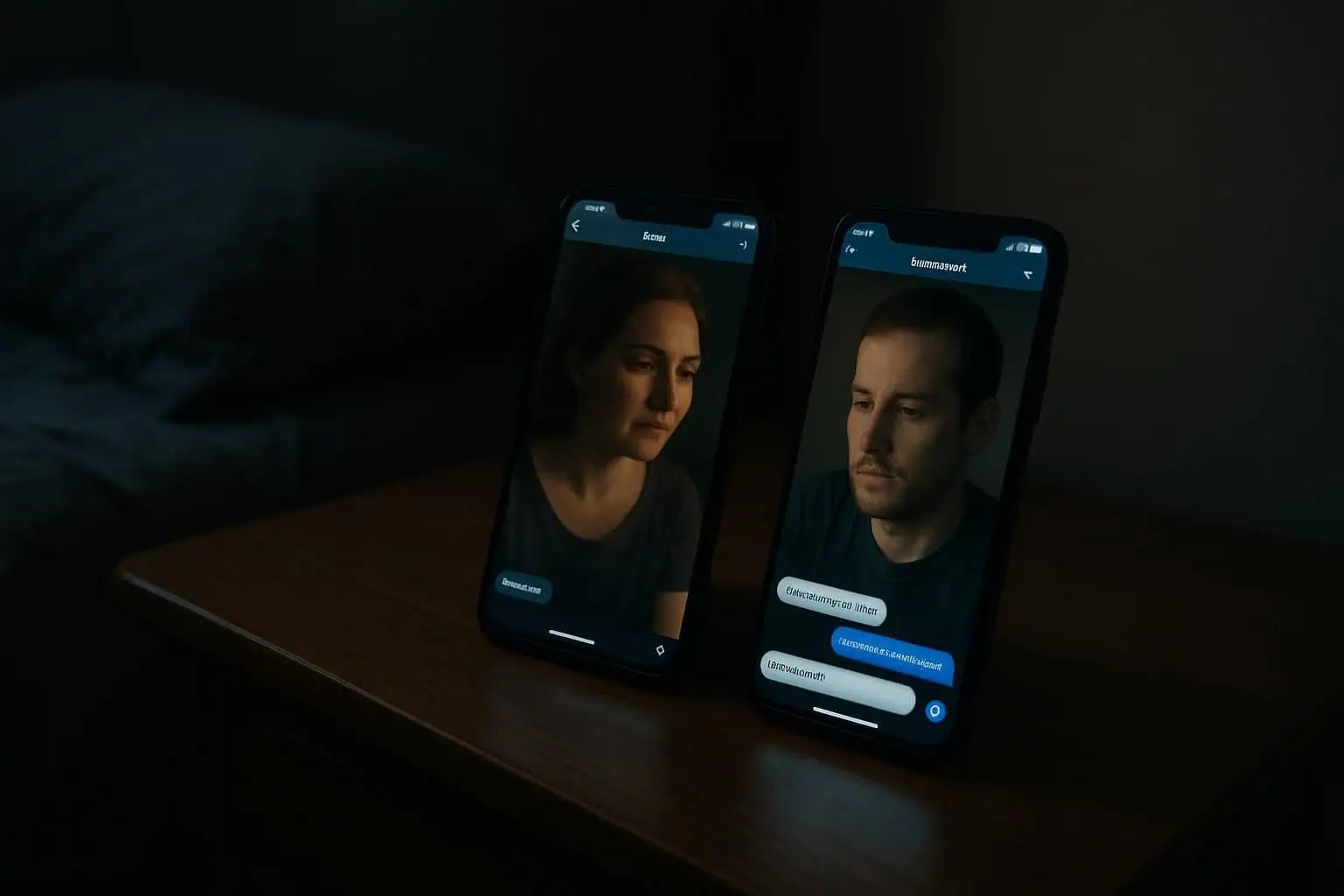
Emotional distance can easily develop when physical separation is a factor. Without the ability to connect in person, some partners report lower sexual satisfaction, which can deepen feelings of isolation.
Jealousy is another common hurdle, as about 45% of LDR couples name it their main source of stress. According to relationship expert Dr. Sue Johnson, a pioneer in Emotionally Focused Therapy, secure attachment is key to effective communication, and distance can make it harder to meet those attachment needs.
- Set Clear Boundaries: Talking about expectations upfront helps prevent misunderstandings and builds trust.
- Schedule Meaningful Interaction: Plan virtual dates or dedicated phone calls to ensure quality time together.
- Use Technology Wisely: Frequent, positive communication through tools like video calls can ease fears and strengthen your emotional bond.
Common Characteristics of Long-Distance Relationships

Couples in long-distance relationships often rely on digital tools to share their lives and feelings. Because you can’t be there in person, developing strong communication habits becomes essential for your emotional well-being.
Limited face-to-face interactions
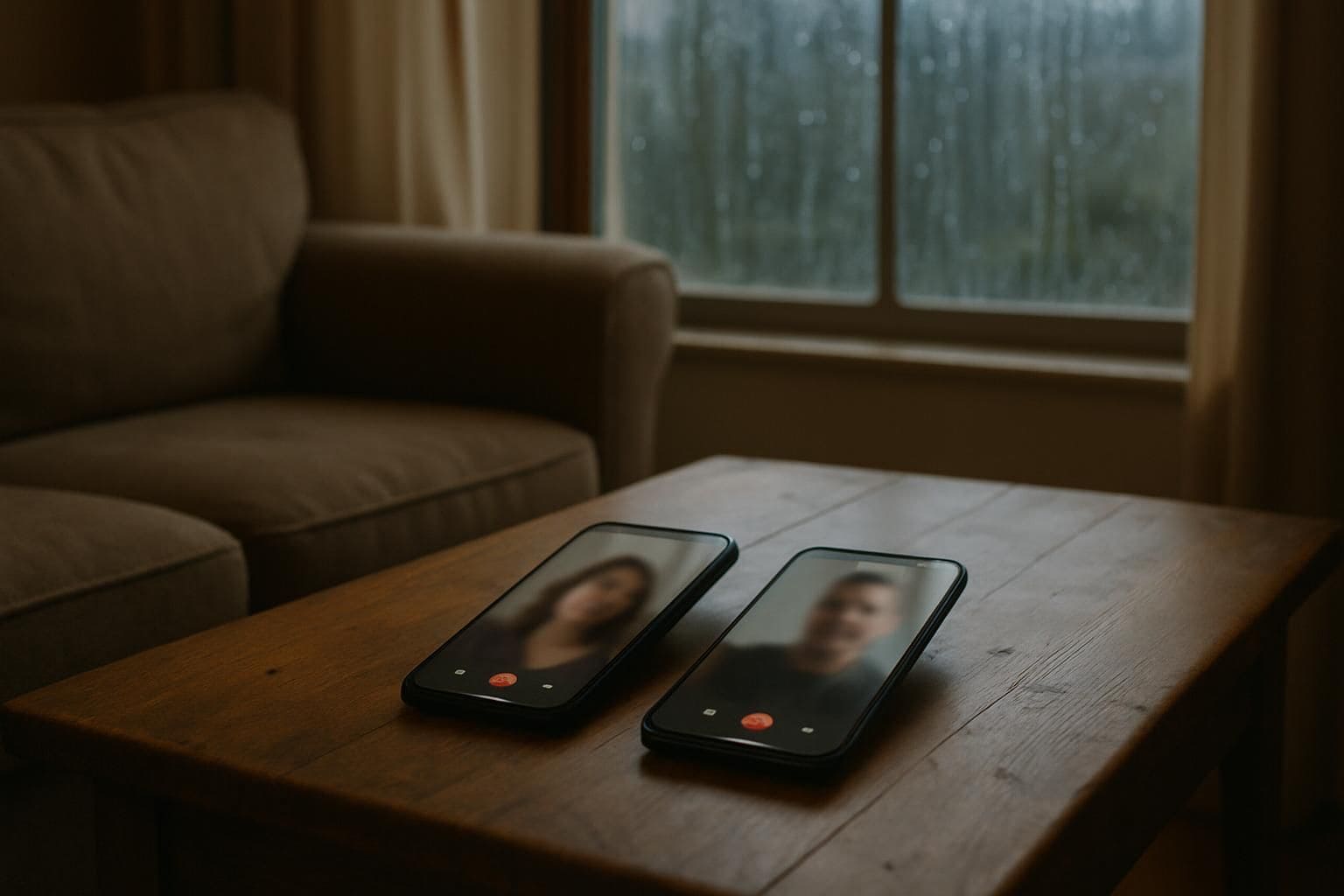
The lack of physical presence is a defining trait of LDRs, and it can lead to loneliness and psychological distress. Studies show that 40% of people in LDRs report feeling lonelier than those in geographically close relationships.
This absence affects emotions and trust. A study by the Center for the Study of Long-Distance Relationships found that 70% of couples reported a decline in physical intimacy over time, which impacted their overall satisfaction.
Distance means so little when someone means so much.
While video calls can help, they don’t fully replace the non-verbal cues from body language that are crucial for resolving conflict and sensing a partner’s mood. This makes a reliance on technology even more critical.
Reliance on technology for communication
Technology is the essential bridge in modern long-distance relationships. Couples depend on everything from texting to video calls to stay connected day-to-day.
Research consistently shows that people in LDRs use these tools more frequently than couples who live close by. One study found that LDR participants engage in more video calls, voice calls, and texting. In fact, the average LDR couple sends around 343 texts per week.
This increased communication is often deeper, too. A surprising 58% of LDR couples report having more meaningful conversations than geographically close couples. Feeling heard and understood through technology provides a sense of closeness that helps the bond endure despite the miles.
Types of Long-Distance Relationships

Long-distance relationships aren’t just for romantic partners. They come in many forms, each with its own unique dynamics and methods for staying connected.
Romantic relationships
Romantic relationships at a distance require dedication, but they can be incredibly rewarding. Surprisingly, many studies show that LDR couples report equal or even higher levels of relationship satisfaction compared to those living nearby, often due to more focused, quality communication.
Effective communication through tools like FaceTime or WhatsApp is crucial for building intimacy and trust. Planning is also key. Scheduling regular virtual date nights and planning future visits helps reduce feelings of jealousy and insecurity, strengthening the bond over time.
Distance means so little when someone means so much. – Tom McNeal
Family relationships
While romance often gets the spotlight, long-distance family connections are just as important. Geographical separation can significantly impact family dynamics, especially in cases of what researchers call transnational motherhood, where mothers migrate for work.
Technology plays a vital role in maintaining these bonds. Regular communication routines, like video calls for sharing daily updates or reading a bedtime story, help bridge the emotional gap. Simple, shared activities like watchinga movie together on a streaming app can create a sense of normalcy and closeness across the miles.
Friendships
Long-distance friendships, especially among college students and young adults, are often maintained through technology. Quick updates on Snapchat, group chats on WhatsApp, and video calls on FaceTime make it easier than ever to keep in touch.
However, emotional distance can still be a challenge. Different time zones and busy schedules can make spontaneous conversations difficult. Research shows that friendship ties can weaken if communication becomes too infrequent, so making a consistent effort to connect is key to making these important relationships last.
Thresholds That Define Long-Distance

Long-distance isn’t just about the miles on a map. It’s also defined by how often you can see each other and how easily you can communicate across different schedules and time zones.
Geographical separation
The concept of “long-distance” often begins once partners live more than 100 miles apart, making casual, frequent visits difficult. The challenges tend to increase with the mileage.
- 100-500 miles: Visits are manageable with some planning, often by car or public transport.
- 500-1,000 miles: Face-to-face meetings become less frequent, which can test a relationship’s strength.
- Over 1,000 miles: Visits are rare, demanding a very high level of trust and excellent communication to keep the bond healthy.
In the United States, approximately 3.75 million married couples are currently managing a long-distance relationship due to factors like work or education.
Distance is not for the fearful; it is for the bold. – Meghan Daum
Frequency of visits
As the miles increase, the number of visits naturally decreases. For couples separated by 500 to 1,000 miles, face-to-face meetings often become a more significant event that requires careful planning.
When the distance exceeds 1,000 miles, seeing each other in person is rare. On average, LDR couples manage to visit each other about 1.5 times per month. Setting clear expectations for these visits is crucial for staying connected. Most couples in these situations anticipate closing the distance and living together after about 14 months apart.
Time zone differences
Time zone differences add a significant layer of complexity to long-distance relationships. According to 2025 data, scheduling mismatches across time zones affect 67% of international LDR couples, making it a major challenge.
When one partner is waking up as the other is going to bed, finding time for a simple phone call becomes a deliberate act of planning. These logistical hurdles can lead to misunderstandings or feelings of neglect if not managed carefully.
To overcome this, many successful couples use shared calendar apps to block out dedicated time for each other. Tools like Raft are designed specifically for couples to sync their schedules and make planning easier.
The Role of Technology in Long-Distance Relationships
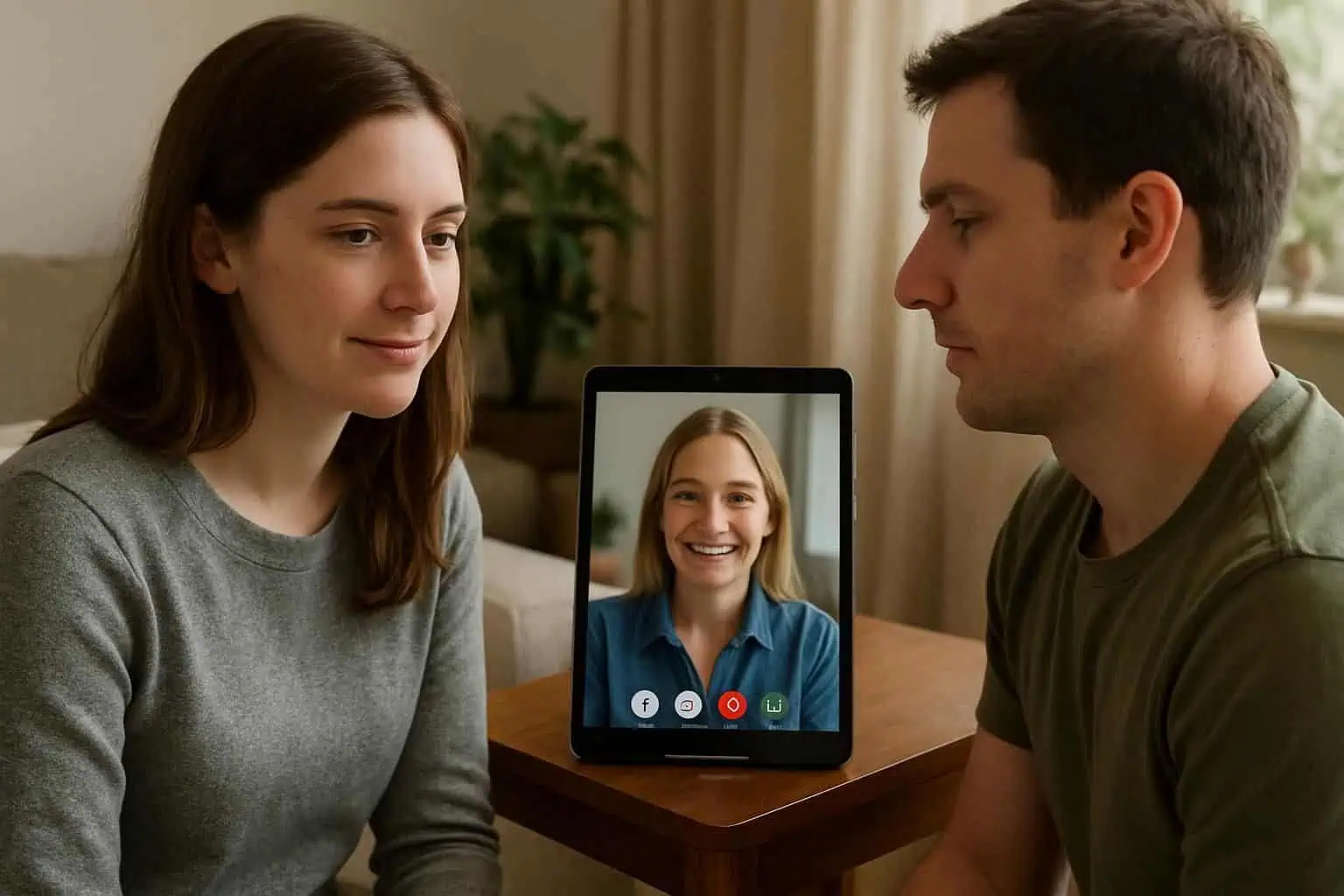
From video calls that make you feel like you’re in the same room to apps designed for shared experiences, technology is the lifeline of the modern LDR. Let’s explore how these tools help bridge the physical gap.
Virtual communication tools
Video call platforms like Zoom and FaceTime are essential, allowing couples to see each other’s facial expressions and feel more present. Messaging apps such as WhatsApp provide a constant, instant line of communication for sharing thoughts and moments throughout the day.
But technology for LDRs goes far beyond simple calls. A whole ecosystem of apps and gadgets exists to help couples share experiences.
- For Shared Activities: Apps like Rave or the Teleparty browser extension let you watch movies or shows in sync.
- For Deeper Connection: The Paired app offers daily questions and quizzes to spark meaningful conversations.
- For a Sense of Presence: Smart speakers with screens, like the Amazon Echo Show or Google Nest Hub, can be used for hands-free video calls while cooking together or just sharing space.
Maintaining intimacy through technology
While virtual tools keep you talking, maintaining intimacy requires a more focused effort. In long-distance relationships, technology becomes the primary way to build and sustain a deep emotional and physical connection.
Texting is the most common form of communication, and research shows that frequent, responsive texts are directly linked to higher relationship satisfaction in LDRs. Beyond texting, technology now offers innovative ways to create a sense of physical closeness.
For example, Bond Touch bracelets allow you to send a vibration to your partner’s wrist with a simple tap, a silent way of saying “I’m thinking of you.” For sexual intimacy, apps like We-Vibe let partners remotely control intimate devices, helping to bridge the physical gap in a tangible way.
Challenges of Long-Distance Relationships

Long-distance relationships can test your patience, communication skills, and budget. Here’s a look at some of the most common hurdles couples face when loving from afar.
Miscommunication
Miscommunication is a major challenge when you can’t rely on physical cues. Without seeing each other’s body language, facial expressions, or hearing the tone of voice, text messages and even emails can be easily misinterpreted.
In my own long-distance experience, a simple text could cause a lot of confusion because we couldn’t gauge each other’s tone. This is a common issue. The lack of non-verbal cues makes it much harder to understand intent, which can lead to unnecessary arguments and feelings of disconnection.
These misunderstandings can erode trust over time and fuel insecurity. If you’re struggling with this, you’re not alone. It’s why setting clear expectations around communication is so important for preventing hurt feelings and keeping your connection strong.
Financial and time constraints
Beyond communication, the practical challenges of money and time can add significant stress. The cost of traveling to see each other, including flights, gas, and hotels, can quickly add up.
Time is another precious resource. Coordinating schedules across different time zones for a simple phone call can be difficult, especially when juggling work, school, and other responsibilities. This logistical puzzle can limit your opportunities for spontaneous connection and quality time.
Over time, these constraints can lead to feelings of frustration and loneliness, making it even more important for couples to work together to find a sustainable rhythm for visits and communication.
Making Long-Distance Relationships Work

Success in a long-distance relationship isn’t about grand gestures, but consistent, intentional effort. With the right strategies, you can build a strong and thriving connection, no matter the distance.
Setting expectations and boundaries
One of the most powerful things you can do is have open conversations about your expectations. How often will you talk? How will you handle disagreements? Establishing clear guidelines reduces stress and prevents misunderstandings.
From my own experience, I know how much security comes from honesty. If you need a video call every night to feel connected, say so. If your partner needs space after a long day, respect that. It’s about finding a balance that works for both of you.
Scheduling visits in advance also provides a tangible goal to look forward to, which strengthens commitment. Understanding each other’s needs and attachment styles is the foundation for setting healthy boundaries that make both partners feel secure and respected.
Creative ways to stay connected
Beyond daily check-ins, finding creative ways to share experiences can make the distance feel smaller. Technology offers a fantastic playground for virtual dates and activities.
- Virtual Movie Nights: Use a service like Teleparty (formerly Netflix Party) to watch movies or shows together in real-time.
- Online Gaming: Play together online. Cooperative games like Stardew Valley or fun party games from Jackbox Games can create a sense of teamwork and shared fun.
- Cook a Meal Together: Pick a recipe, hop on a video call, and cook the same meal in your respective kitchens. It’s an interactive and intimate way to share an everyday activity.
- Send Surprise Mail: A handwritten letter, a small thoughtful gift, or a care package with their favorite snacks is a tangible reminder of your love that technology can’t replicate.
Transitioning Out of Long-Distance

Closing the distance is the goal for most LDR couples, but moving from video calls to sharing the same space brings its own set of adjustments. Here’s how to navigate this exciting transition smoothly.
Preparing for proximity
The journey from long-distance to living close is a major life change. It’s crucial to talk openly about expectations to minimize stress and potential conflicts.
One of the biggest adjustments is moving from idealized, “holiday-mode” visits to the reality of daily life. During LDRs, couples often idealize their partners because they aren’t dealing with day-to-day annoyances. Be prepared for the romance of reunion to mix with the practicalities of merging routines and habits.
Discussions about finances, household chores, and the need for personal space are essential. Establishing a healthy balance between “we time” and “me time” from the start will help you both adapt to your new life together.
Managing relationship dynamics after the distance
After being apart, you have to relearn how to be a couple in person. The communication habits you built from a distance now need to adapt to face-to-face interactions. You can no longer take a few hours to craft the perfect text response when your partner is in the same room.
It’s important to be patient with each other as you navigate this new dynamic. Continue to have open conversations and make sure your long-term life goals still align. A surprising number of LDRs, about one-third, break up within three months of reuniting, often because the reality of being together doesn’t match the idealized version they held onto.
By consciously working to merge your lives and addressing challenges with honesty, you can build a stable and trusting foundation for your future together.
How Will Long-Distance Relationships Evolve in 2025?
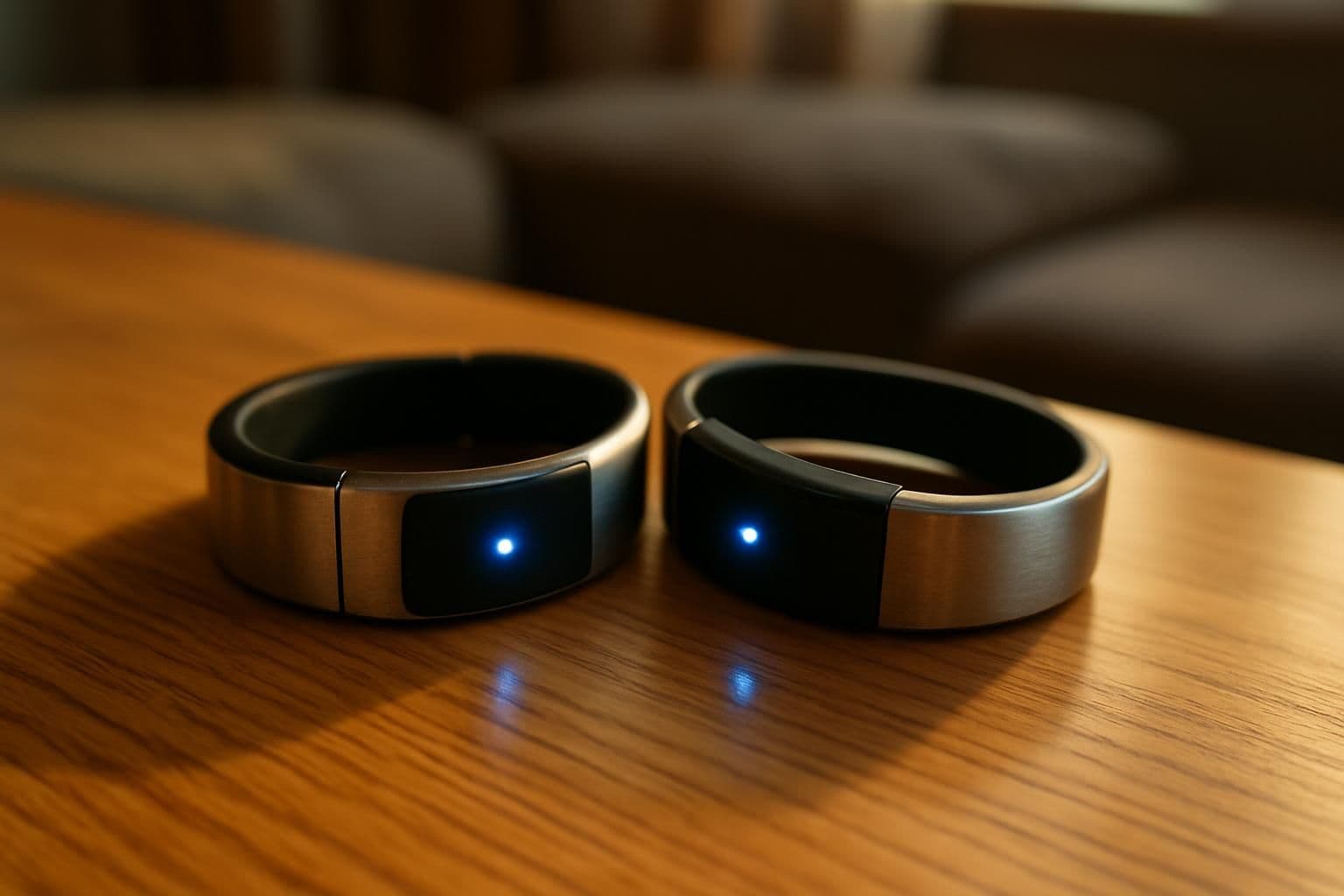
Looking ahead, technology is set to make long-distance relationships feel even closer and more connected. By 2025 and beyond, innovations in virtual and augmented reality will likely play a much larger role.
Virtual reality (VR) platforms are poised to create deeply immersive shared experiences. Imagine putting on a headset and not just seeing your partner on a screen, but feeling like you’re sitting across from them in a virtual café or walking together on a digital beach. This technology aims to restore the sense of presence that is lost with distance.
Haptic technology, or “virtual touch,” is also advancing. Gadgets like Bond Touch or Hey Bracelet already allow partners to send physical sensations, like a vibration or a squeeze, across any distance. In the future, this technology could become even more sophisticated, allowing for more nuanced interactions that mimic real physical touch.
These advancements won’t just be about communication. They will focus on creating shared memories and experiences, making it easier than ever to build and maintain a strong, intimate bond, no matter how many miles separate you.
People Also Ask
What exactly is considered a long-distance relationship?
A long-distance relationship typically involves romantic partners who live far enough apart that frequent, in-person meetings are not practical. While there’s no strict rule, it’s often defined as living 100 or more miles apart, requiring reliance on technology like video calls and texting to stay connected.
How do couples keep their bond strong in a long-distance relationship?
Successful couples prioritize clear and consistent communication, setting aside dedicated time for calls and virtual dates. They also build trust, establish shared goals for the future, and find creative ways to feel connected, such as playing online games or sending care packages.
Can a long-distance relationship really work out over time?
Yes, they absolutely can. Statistics show that about 60% of long-distance relationships are successful in the long run. Success depends on factors like mutual commitment, strong communication skills, trust, and having a clear plan to eventually close the distance.
What are some common challenges faced by couples in long-distance relationships?
Common hurdles include feelings of loneliness, miscommunication due to the lack of non-verbal cues, and the financial cost of travel. Many couples also struggle with jealousy, scheduling conflicts across time zones, and the emotional strain of missing physical intimacy.
References
https://www.berkeleywellbeing.com/long-distance-relationships.html
https://pmc.ncbi.nlm.nih.gov/articles/PMC5635840/
https://markmanson.net/long-distance-relationships
https://repository.rit.edu/cgi/viewcontent.cgi?article=11084&context=theses
https://pmc.ncbi.nlm.nih.gov/articles/PMC8669216/
https://en.wikipedia.org/wiki/Long-distance_relationship
https://www.ebsco.com/research-starters/psychology/long-distance-relationship
https://papers.ssrn.com/sol3/papers.cfm?abstract_id=2674682
https://swisscognitive.ch/2023/06/29/breaking-barriers-how-technology-bridges-the-gap-in-long-distance-relationships/ (2023-06-29)
https://www.momjunction.com/articles/long-distance-relationship_00432954/
https://www.calm.com/blog/long-distance-relationship
https://www.doulike.com/blog/statistics/long-distance-relationship-statistics/
